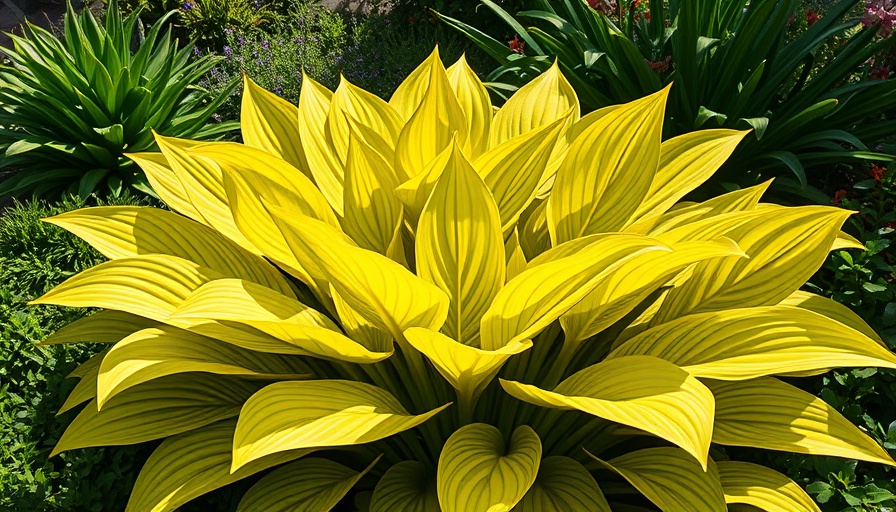
Unraveling the Mystery of Yellow Hosta Leaves: A Gardener’s Guide
Hostas are cherished in gardens for their lush foliage and vibrant colors. However, when the leaves of these beloved plants turn a concerning shade of yellow, it can leave gardeners puzzled and anxious. This article will explore the multiple causes behind this phenomenon and what remedies can help restore your hostas to their rightful glory.
Understanding the Causes: Key Inculprits Behind Yellowing Leaves
With a reputation as resilient garden plants, hostas can occasionally show signs of distress through yellowing leaves. Let's delve into the nine most common causes of yellow foliage:
- Bacterial Rot: Often noticeable in the lower leaves, bacterial rot leads to mushy, decaying foliage that emits an unpleasant smell. This condition is exacerbated by excessive moisture and high temperatures, necessitating the removal of infected plants.
- Dormancy: Hostas naturally enter dormant periods, particularly during colder months. Yellowing leaves during late fall or early winter is typical, especially following frost. Distinguishing between natural dormancy and health problems is crucial for appropriate care.
- Fusarium: This fungal infection can lead to yellowing and browning of leaf tips, often resulting in stunted growth. It's a reminder of the importance of maintaining a healthy garden environment to prevent fungal outbreaks.
- Foliar Nematodes: These pesky pests can wreak havoc on hosta leaves, causing discoloration and lesions. Early detection and treatment are key to avoiding extensive damage.
- Light Exposure: Inadequate sunlight can stress hostas, causing yellowing. Conversely, too much direct sunlight can scorch their leaves. Assessing the light conditions in your garden is essential.
- Over-Feeding: Excess nutrients can lead to leaf burn, making it crucial to fertilize judiciously and follow recommended guidelines.
- Petiole Rot: Similar to bacterial rot, this condition affects the leaf stalks, leading to premature yellowing and wilting of leaves.
- Viruses: Various viral infections can manifest through yellowing foliage, underscoring the importance of monitoring plant health regularly and removing infected plants.
- Watering Issues: Both overwatering and underwatering can cause significant stress to hostas. Striking a balance in watering practices is imperative for maintaining healthy plants.
Act Now: Adjustments and Care to Revive Your Plants
The silver lining to yellowing leaves is that it often prompts necessary adjustments. For bacterial rot, the best course of action is to remove the infected plants to prevent spreading. Adjusting light conditions or watering practices can enhance growth quality. Monitoring for pests and diseases regularly ensures your plants stay healthy and vibrant.
Future-Proofing Your Garden: Prevention Strategies
Looking ahead, being proactive is key. Consider the following tips for maintaining your hostas and preventing future yellowing:
- Ensure proper drainage in garden beds to prevent bacterial and fungal infections.
- Monitor weather conditions regularly, adjusting care routines based on seasonal changes.
- Utilize organic gardening practices, such as crop rotation and companion planting to enhance soil health and biodiversity.
- Invest in quality garden tools for efficient pruning, fertilization, and pest control.
- Create a consistent watering schedule, adapting to environmental needs.
Connect with Your Garden and Embrace Creative Solutions
Gardening is not just a chore; it’s a rewarding investment of time and energy, yielding beauty and tranquility. When faced with the challenge of yellowing hosta leaves, take it as an opportunity to deepen your understanding of plant care. Participate in community gardening workshops or grab gardening books to expand your knowledge and keep your outdoor space flourishing.
Conclusion: The Heart of Gardening is Care
Yellow leaves don’t have to spell doom for your hostas. With careful observation, a willingness to adjust care, and dedication to learning, you can not only rectify the issue but also enhance your gardening journey. Dive deeper into your gardening projects, explore innovative landscaping ideas, and celebrate the joy of nurturing vibrant life in your backyards!
 Add Row
Add Row  Add
Add 




Write A Comment